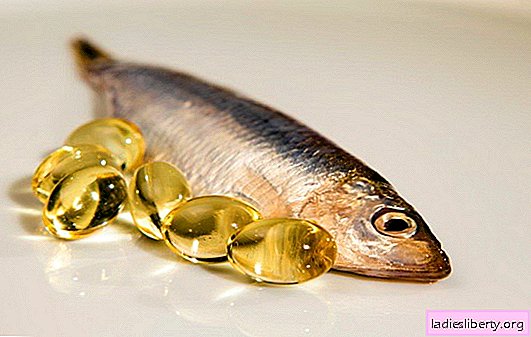
One type of blood from the nose of a child is able to plunge some moms into complete shock. It seems to them that their beloved child is in mortal danger. In fact, not every case of bleeding is so threatening. Therefore, seeing the scarlet spots on the pillow, shirt or jacket, do not panic. It should simply provide first aid, and then consult with your pediatrician. It is likely that a recommendation will be given to be examined. Or the cause for alarm will be so trivial that no special measures will even have to be taken.
Why does nose bleeding begin? What needs to be done to stop it? What to do to ensure that this does not happen again? Here are the main issues that concern caring parents in such cases.
Why can go blood from the nose of a child
Unpleasant phenomenon in medicine is the tricky name "epistaxis". Anterior nasal bleeding is most common, less often doctors encounter the back. But it is precisely it that attracts maximum attention. The main symptom is the appearance of drops of bright scarlet blood or a stream of it, flowing either outwards or along the back of the throat.
Related phenomena:
- noise in ears;
- general weakness;
- dizziness.
If the disease manifests itself often, the consequences can be a significant drop in blood pressure, a rather rapid pulse, and palpable weakness. Although it may be life threatening in some cases, deaths are extremely rare.
You do not need to be a doctor to understand: an unpleasant situation happens because of the violation of the integrity of the blood vessels located in the tissues of the nasal cavity. It remains to understand why this is happening.
Local causes of nasal blood flow in a child
1. Injuries. This is the most common problem that causes epistaxis. Household or occupational injuries sustained in traffic accidents or during surgical operations - there are a lot of types of them that cause a violation of the integrity of the shell.
Do not forget about the ingress of foreign bodies in the nasal cavity and respiratory tract, as well as damage to the tissues of the nasal cavity when conducting various diagnostics for therapeutic purposes (sensing, puncture, catheterization).
Here you can talk about the bad habit of many children to stick their fingers in the nose, thereby causing damage to the superficial vessels.
2. Painful conditions. The expiration of scarlet fluid from damaged vessels often leads to excessive congestion of the nasal membrane caused by various ailments - adenoids, chronic rhinitis, sinusitis.
3. Dystrophic processes. Various deviations from the normal state of the mucous membrane of the organ of smell can lead to the fact that blood begins to flow from the nose of the child. These pathologies include the curvature of the nasal septum, atrophic rhinitis.
4. Tumors in the nose. Such diseases can lead to very serious consequences:
- angioma;
- malignant tumor;
- specific granuloma.
5. Direct effects of chemicals on the nasal mucosa, penetrated by small vessels.
6. Fragility of vessels. It occurs when an acute deficiency of vitamin C in the body of a baby or teenager. This is due to the active participation of the element in the synthesis of a special protein, which gives elasticity to the walls of blood vessels. Exacerbations can occur in the off-season (fall, spring) and in winter.
Another reason for the increased capillary fragility is dry air, which occurs when sanitary and hygienic requirements for humidity in rooms where children are for an extended period are not observed.
7. The use of certain drugs produced in the form of sprays.
Common causes of nosebleeds in a child
1. Long stay in the bright sun leads to an increase in temperature and subsequent sun or heat stroke, overheating. The consequence of this is very often the epistaxis.
2. An unpleasant phenomenon often leads to malfunction of the cardiovascular system. Usually these are diseases such as atherosclerosis, symptomatic hypertension. Not less problems are delivered by malformations, under which there is a sharp increase in blood pressure readings.
3. Infectious diseases, accompanied by an increase in body temperature, can also cause blood to flow from the child’s nose.
4. Adolescents are often at risk because of the peculiarities of the development of their body at this age and possible hormonal imbalances.
5. If older children dive too deeply, participate in mountain expeditions, then with a sudden and significant drop in external pressure, nosebleeds happen.
6. A strong physical strain in most cases can cause blood from the nose in a child.
7. Significant allergic reactions to irritating factors, provocateurs - another cause of vascular damage, similar to chronic rhinitis, when the mucous membrane swells, the child often sneezes.
Symptoms of bleeding and blood loss
The onset of epistaxis in different children may not coincide. Someone this happens suddenly and immediately, and someone has a number of symptoms preceded by troubles: itching in the nasal cavity, tickling sensation, headache with dizziness, significant tinnitus.
The most obvious symptom is the blood from the nose of a child that goes outside. If this process goes inside, the fluid flows into the oropharynx, that is where it is found when pharyngoscopy is performed.
Mild blood loss has the following signs:
- the appearance of dizziness in a patient who has seen a scarlet color (in especially impressionable children);
- there is thirst;
- hear tinnitus;
- the skin turns pale;
- there are complaints of palpitations;
- The patient feels a significant weakness.
The average severity of blood loss is characterized by severe dizziness. He is accompanied by shortness of breath, lowering blood pressure. Acrocyanosis (cyanosis of the skin), tachycardia (increase in the number of heart contractions) can be observed.
When the blood from the nose of a child is strongly flowing, then a heavy loss can occur, leading to hemorrhagic shock. This is manifested in the inhibition of the baby, he may lose consciousness. When examined by a doctor, the main symptoms are called a strong decrease in blood pressure, vividly manifested tachycardia. The patient has a filamentous pulse.
How to stop the blood from the nose of a child
First of all, it is necessary to maintain complete peace of mind by the adults themselves, so as not to frighten the child, thereby aggravating the situation. We must not forget that the mere fact that blood flows from the nose of a child can completely disrupt it and the symptom will intensify.
During an attack, you must call the doctor, and place the patient on an even bed. If it is impossible to lie down, then in a sitting position, throw the head back a little, inserting cotton swabs manually twisted into each nostril. Without them, doctors categorically object to the head thrown back - blood will flow into the oral cavity, or even into the esophagus. At the same time, it is necessary to put something cold on the nose, for example, ice packs from the refrigerator (wrapped in cloth), a towel, dipped it in cold water.
In the event that there is no first-aid kit at hand, you can ask the victim to sit down, leaning forward, squeeze his nostrils with two fingers (if he is not able to do it himself) and hold them for several minutes to stop the nose from the child. You can also use a clean gauze or a not very hard cloth, so as not to damage the wings of the nose also outside. Usually this is enough to make it all go away.
When the doctor arrives, his actions as an emergency may be as follows:
1. Coagulation. Cauterization of a damaged blood-emitting vessel is performed using special instruments based on the use of a laser, chemicals such as silver nitrate or various acids, ultrasound, and electric current.
2. Tamponade. Using a cotton swab that has absorbed vagotyl or chloroacetic acid, cauterization of the nasal membrane is performed. Due to this, completely stops the flow of blood from the nose of the child.
3. Hemostatic sponge. In such devices, placed in the nasal cavity, there are substances that can enhance the ability of blood to clot.
4. Plasma transfusion. Fresh frozen plasma is transfused in severe cases when blood cannot be stopped by any other means.
5. Intravenous administration of drugs. Another way to cope with heavy bleeding is to introduce aminocaproic acid into the body through a vein. Hemodez and reopoliglukin are also used.
Prevention of nasal bleeding in a child
It is good to give ascorutin to babies and teenagers, which contain important vitamins C, P. The dose is calculated as follows:
- children from three to twelve years prescribed a floor pill once a day;
- for teens older than twelve, it is enough to drink one pill - 2-3 times a day, the course lasts for four weeks.
To prevent recurrent relapse is required to undergo inspection by specialists.
1. The doctor examines the nasal cavity in order to understand whether there are any different types of tumors, polyps or foreign bodies that got there during the game.
2. A complete blood count is available. It is necessary for a clear determination of the number of platelets (red blood cells). The norm for a child is 180x400x10x9 per liter.
3. A blood test is performed on its coagulation system. This includes determining the number of active platelets, flow rate, coagulation factors.
If a child’s nose bleeds often enough, then he needs to be consulted:
- endocrinologist;
- oncologist;
- an immunologist;
- hematologist;
- otolaryngologist.
In a family where there are often situations when the child is bleeding from the nose, a first-aid kit with the necessary set of drugs and preparations should always be on hand. Its composition is formed on the advice of the attending physician.











